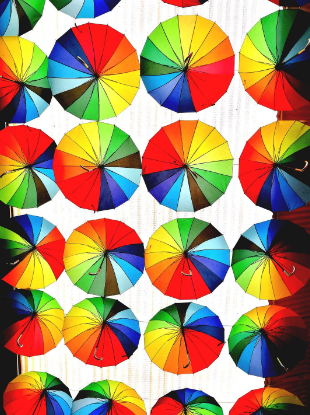However, you think of color, it's important to remember

projected color mixes differently than pigments. The full spectrum of colored light will combine to create white. Whereas the full spectrum of pigments will mix together to create some shade of grey, black, or brown. When you hear the term Color Theory, know that it is all about pigments (aka paints, inks, and pastels).
The most basic components of color are the primary colors. Primary colors are the root of all other colors and can not be created by mixing other colors together. They are red, yellow, and blue.
If you mix equal parts of two primary colors you get a secondary color. The secondary colors are orange, purple, and green.
If you mix equal parts of two primary colors you get a secondary color. The secondary colors are orange, purple, and green.
Tertiary colors are made by mixing equal parts of one secondary color and the adjacent primary color, such as red and orange to create red-orange.
When arranged in a circle this progression of colors is known as the color wheel.
Write your awesome label here.
"All colors are the friends of their neighbors and the lovers of their opposites."
- Marc Chagall
